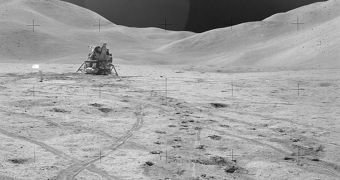With 26 competing teams, the Google Lunar X Prize is definitely the most important competition ever conducted with the express purpose of reaching and exploring the lunar surface. NASA has recently released a series of guidelines calling on these competitors not to target historic sites on the Moon.
In a statement released jointly by officials at the American space agency and the X Prize Foundation, these guidelines were introduced to the teams. They call on each participant to avoid the historic Apollo landing sites, which are considered to be part of the United States' history.
NASA guidelines currently protect a variety of historic and scientifically important sites on the lunar surface, and the 26 privately funded teams engaged in the Google Lunar X Prize must not tarnish any of them with their robotic explorers.
The competition is centered on each team developing its own exploration robot, which needs to be sent to the surface of the Moon, complete a 500-meter (1,650-foot) drive, and send back images of the lunar surface. The first team to do so will win $20 million.
The X Prize Foundation, an organization based in Playa Vista, California, is offering up a total of $30 million in prizes, depending on the achievements the top teams make. Now, when assessing the winners, they will also be looking at whether the teams in question respected the NASA guidelines.
The announcement was made on Thursday, May 24. NASA does not have the power to make its request either mandatory, or enforceable, but asks that important scientific and historic sites be left undisturbed by the upcoming swarm of private spacecraft to be deployed on Earth's natural satellite.
The Apollo sites, established between 1969 and 1972, are of special interest to NASA, since numerous experiments and equipment, as well as footsteps, were left behind by the astronauts who carried out these missions, Space reports.
The Google Lunar X Prize is scheduled to conclude either by the end of 2015, or when all the funds allotted for the contest have been exhausted, whichever comes first. In addition to the first prize, $5 million will be awarded to the runner-up team.
Another $4 million will go to teams that manage to operate at night, whose rovers travel for more than 5 kilometers (3 miles), or which detect water-ice on the lunar surface. The final million will go to the team that encourages diversity in space exploration.

 14 DAY TRIAL //
14 DAY TRIAL //